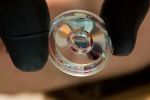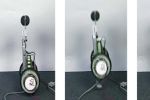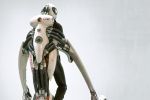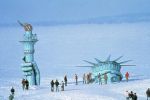Thousands of prehistoric tracks are clustered in less than an acre of Western desert
About 190 million years ago, during the Early Jurassic Period, a vast desert larger than the Sahara covered much of what is now Utah, Wyoming, Colorado, New Mexico, Arizona, and Nevada. Given that Jurassic time was the "Age of Dinosaurs," it's not surprising that fossil evidence of the great reptiles would show up there now and then. But recently, geologists from the University of Utah uncovered an exceptional find -- a large concentration of dinosaur tracks and rare tail-drag marks.
[
Read Full Story ]










